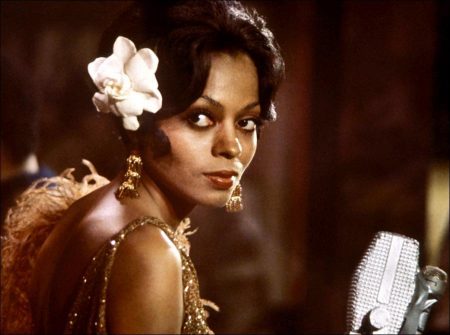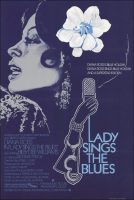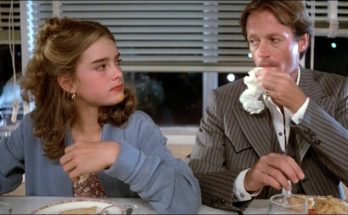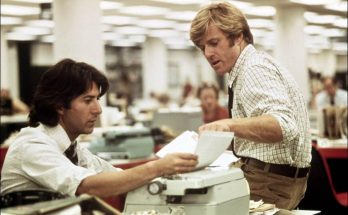Lady Sings the Blues movie storyline. Born Elinore Harris, Billie Holiday had a difficult teen and young adulthood period, which included working in brothels, both as a cleaning woman and a prostitute, and being raped. Through this difficulty, she dreamed of becoming a jazz singer. She got her initial singing break when she applied at a Harlem club that was looking for a dancer, but where she got hired as a singer. There, she met and fell in love with the suave Louis McKay.
After this initial break, Billie wanted her singing career to move to the mainstream clubs in downtown Manhattan. She took a risk when she agreed to be the lead singer for the Reg Hanley Band, a primarily white group, who convinced her that she would have to make her mark in regional tours before her Manhattan dream could happen. As Billie tried to advance her career, pressures of life, including being a black woman, led to her not so secret substance abuse (especially of heroin), not so secret because of her increasingly erratic behavior
Lady Sings the Blues is a 1972 American biographical drama film directed by Sidney J. Furie about jazz singer Billie Holiday, loosely based on her 1956 autobiography which, in turn, took its title from one of Holiday’s most popular songs. It was produced by Motown Productions for Paramount Pictures. Diana Ross portrayed Holiday, alongside a cast including Billy Dee Williams, Richard Pryor, James T. Callahan, and Scatman Crothers.
In 1936, New York City, Billie Holiday is arrested on a drugs charge. In a flashback to 1928, Billie is working as a housekeeper in a brothel in Baltimore where she is raped. She runs away to her mother, who sets up a job cleaning for another brothel in the Harlem section of New York. The brothel is run by an arrogant, selfish owner who pays Billie very little money.
Eventually, Billie tires of scrubbing floors and becomes a prostitute, but later quits and returns to a nightclub to unsuccessfully audition to become a showgirl. After “Piano Man” (Richard Pryor) accompanies Billie “All of Me”, Jerry, the club owner, books her as a singer in the show.
Billie’s debut begins unsuccessfully until Louis McKay (Billy Dee Williams), arrives and gives her a fifty dollar tip. Billie takes the money and sings “Them There Eyes”. Billie takes a liking to Louis and begins a relationship with him. Eventually she is discovered by two men: Harry and Reg Hanley, who sign her as a soloist for their southern tour in hopes of landing a radio network gig. During the tour, Billie witnesses the aftermath of the lynching of an African-American man, which presses her to record the controversial song “Strange Fruit”.
The harsh experiences on the tour result in Billie taking drugs which Harry supplies. One night when Billie is performing, Louis comes to see Billie. She collapses on stage. In her dressing room, Louis notices her needle marks, knows that she is doing drugs, and tells her she is going home with him. Billie promises to stay off the drugs if Louis stays with her.
In New York, Reg and Louis arrange Billie’s radio debut, but the station does not call her to sing; the radio sponsors, a soap company, object to her race. The group heads to Cafe Manhattan to drown their sorrows. Billie has too much to drink and asks Harry for drugs, saying that she does not want her family to know that the radio show upset her. He refuses and she throws her drink in his face.
She is ready to leave, but Louis has arranged for her to sing at the Cafe, a club where she once aspired to sing. She obliges with one song but refuses an encore, leaving the club in urgent need of a fix. Louis, suspicious that Billie has broken her promise, takes her back to his home but refuses to allow her access to the bathroom or her kit. She fights Louis for it, pulling a razor on him. Louis leaves her to shoot up, telling her he does not want her there when he returns.
Lady Sings the Blues (1972)
Directed by: Sidney J. Furie
Starring: Diana Ross, Billy Dee Williams, Richard Pryor, James T. Callahan, Sid Melton, Isabel Sanford, Norman Bartold, Clay Tanner
Screenplay by: Chris Clark, Suzanne De Passe
Production Design by: Carl Anderson
inematography by: John A. Alonzo
Film Editing by: Argyle Nelson Jr.
Costume Design by: Ray Aghayan, Bob Mackie
Set Decoration by: Reg Allen
Music by: Michel Legrand
Distributed by: Paramount Pictures
Release Date: October 12, 1972
Views: 125




